Ciabatta, the classic Italian loaf, is easier to make than you might think. Learn how to bake your own Ciabatta loaf with this simple guide. Get the full recipe below.
What is Ciabatta and where is it from?
It is said that Ciabatta was first made by a baker from the Veneto region of Italy called Arnaldo Cavallari back in the 1980s. The story goes that he was looking to create a loaf of bread that would compete with the French baguette, and so the Ciabatta was born!
The name Ciabatta actually means "slipper" in Italian - a name that gets its inspiration from the fact that the bread's shape looks like a slipper. Do you see the resemblance?
The characteristics of Ciabatta
The two things that distinguish Ciabatta from other types of bread are its flavour and texture.
Ciabatta has a slightly tangy flavour which results from the fermentation period at the start of making the loaf. Don't worry though, this is quite mild as opposed to an overpowering, dominant flavour.
The texture has quite an open crumb with some big, irregular air holes. The air holes are created from the high hydration of the dough. What we mean by high hydration is the ratio of liquid to flour. There is a lot of liquid in Ciabatta dough and so you get a really wet, sticky dough.
The bread itself is quite chewy and it has a crisp, golden-brown crust.
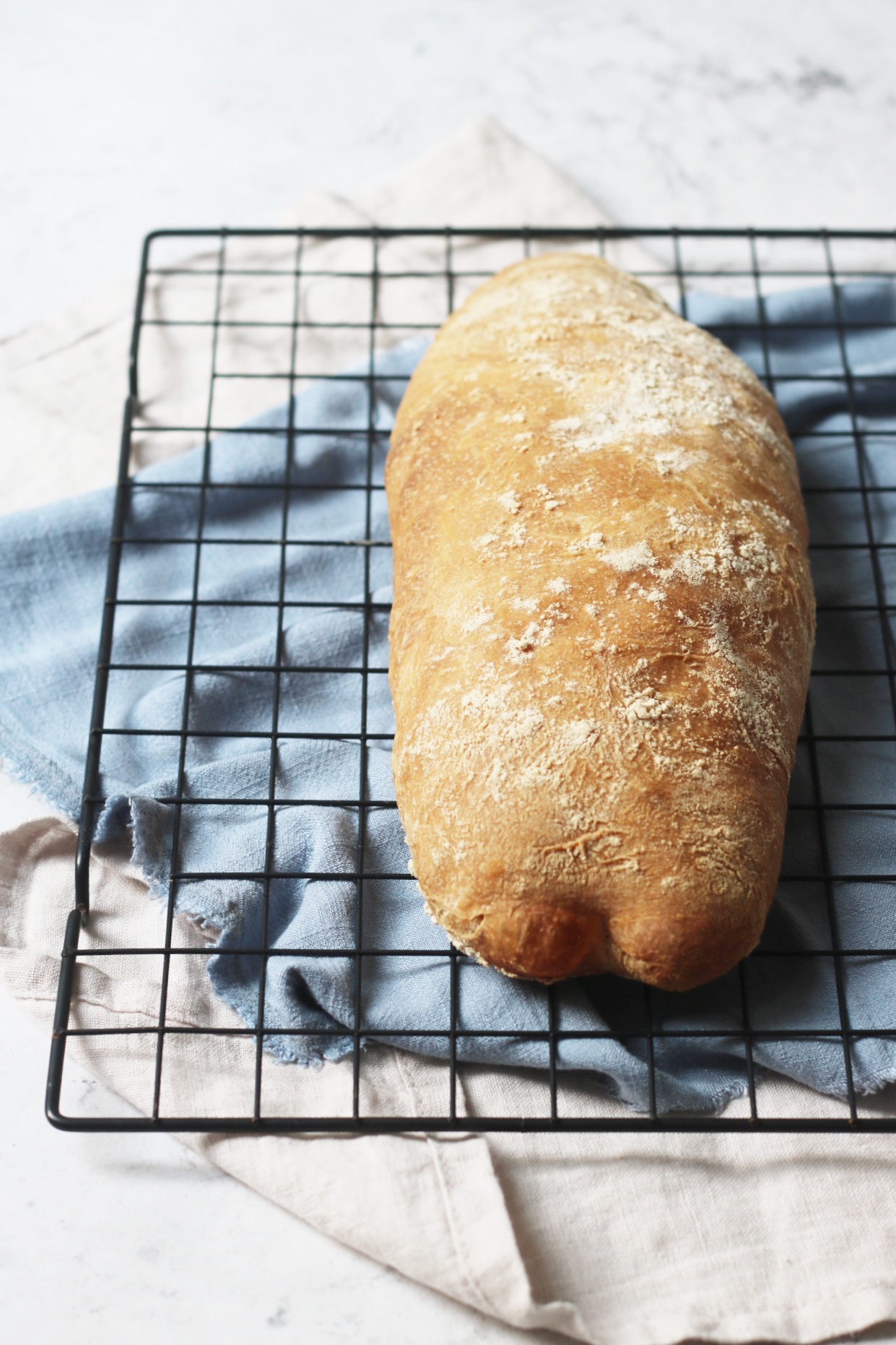
How to make Ciabatta
There are a number of steps to make Ciabatta but when broken down they are quite simple.
- Make the "biga" or "pre-ferment". This is a mixture of flour, water and yeast that is left to ferment overnight (of just a few hours if you're rushed for time). As mentioned above this is what gives Ciabatta its tangy flavour.
- Once the biga has fermented, mix with more flour, water and yeast to form a dough. A little salt is also added at this stage for flavour.
- Next let the dough rise. It will need to double in size during this time.
- To help give the dough structure you will then complete a series of "stretch and folds". This is where you lift up the side of the dough, stretching it, then fold it over the top of the rest of the dough. You turn the bowl 90 degrees and repeat. You do this 4 times over a 30 minute period.
- Once you've done the "stretch and folds" you then shape it and let is rise again.
- Lastly you bake it in the oven at 200C for 35 - 40mins. This high temperature gives it a crispy crust.
Tips for making Ciabatta
There are a couple of top tips that I wanted to share when making this bread recipe. It's quite a unique dough to work with and so it needs some extra care and attention.
- My first tip is simply to not be alarmed! It is a wet dough. Just go with it. Follow the recipe and you can't go wrong.
- When you do your stretch and folds make sure you've oiled your hands first with plenty of oil. If you don't the dough WILL stick to your hands and we don't want that.
- When it comes to shaping the dough, oil or flour the surface before tipping it out. I prefer to use oil as if you use flour it is easy to use too much and then this will affect the dough.
- Have your baking tray as close to you as possible when you need to transfer it to the baking tray. Because it's such a wet dough it can be hard to move it without it using its shape.
- To help it keep its shape when baking, use your hands to carefully tuck the sides under the loaf when its on the baking tray and before letting it rise for the last time.
Hopefully these tips help! But, if you have any questions or your own tips then do share them in the comments.
The recipe

Ciabatta
Ingredients
For the biga
- ¼ teaspoon fast action dried active yeast
- 75 g plain flour
- 75 ml warm water
For the dough
- ½ teaspoon fast action dried action yeast
- 100 ml warm water
- 1 tablespoon olive oil
- 125 g strong white bread flour
Instructions
To make the biga
- The night before you want to bake the ciabatta loaf add the yeast, flour and water to a stand mixer fitted with a dough hook.
- Mix on low until a wet dough forms then transfer it to a bowl that has been coated with olive oil.
- Cover the bowl and then leave it to rest overnight somewhere cool.
To make the dough
- In the morning, add the remaining ingredients to the biga and again, using a mixer with dough hooks, mix on low until it comes together into a ball of dough.
- Remove from the bowl and then knead for 10-15 minutes until it is smooth and elastic.
- Put the dough back into a mixing bowl coated with olive oil.
- Leave to prove for an hour and a half or until doubled in size.
- Once it has risen, lift the dough from one side and pull it up, stretching it slightly. Fold this over the top of itself and release.
- Rotate the bowl 90 degrees and repeat the stretch and fold action.
- Keep doing this until you have done 8 folds.
- Rest for 30 mins, then repeat.
- Rest for another 30 mins and then repeat the stretch and fold process for the last time.
- Pre-heat the oven to 200C/ 392F /gas mark 6 and line a baking tray with baking paper coated with flour.
- Turn the dough out onto a well oiled or well floured surface.
- Shape the dough into a square then fold the left edge into the centre. Then fold the right edge over the top.
- Pick up the dough and tip it over, on to the baking paper.
- If it spreads out, tuck the edges underneath to create some tension.
- Sprinkle flour over the top then leave for 30 minutes covered with a tea towel.
- Once rested, bake for 35-40 mins, until the crust is golden brown.
- Allow to cool completely before slicing.
Nutrition
More bread recipes
For the full range of bread recipes on the blog, check out the bread baking archive.
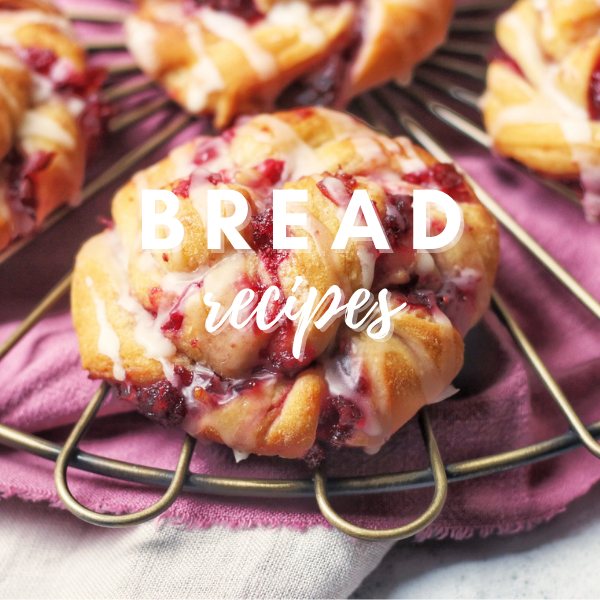

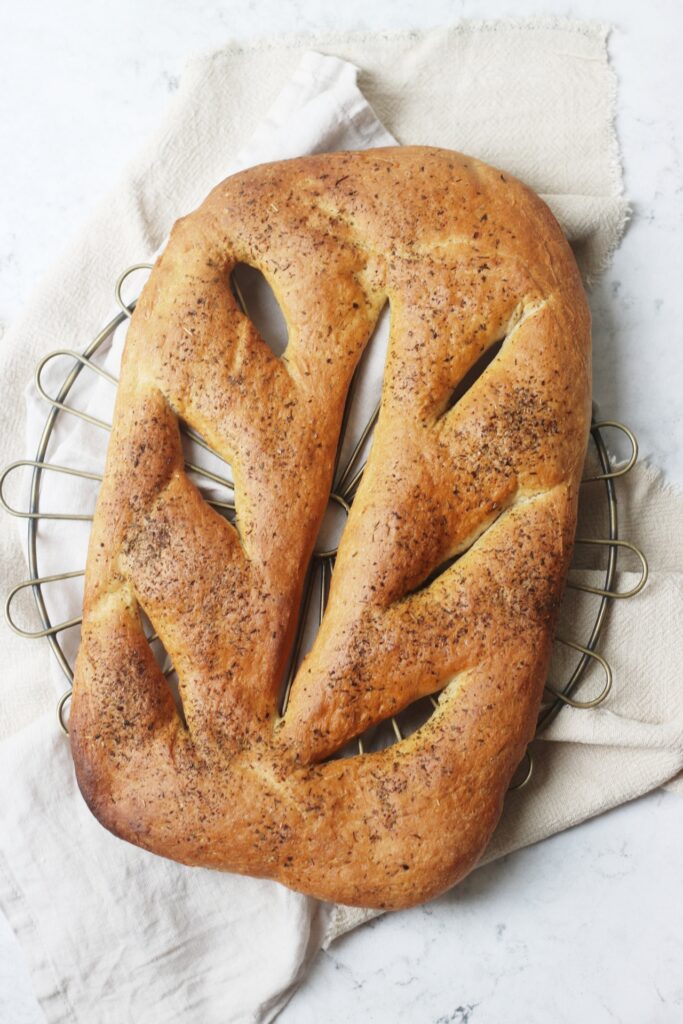
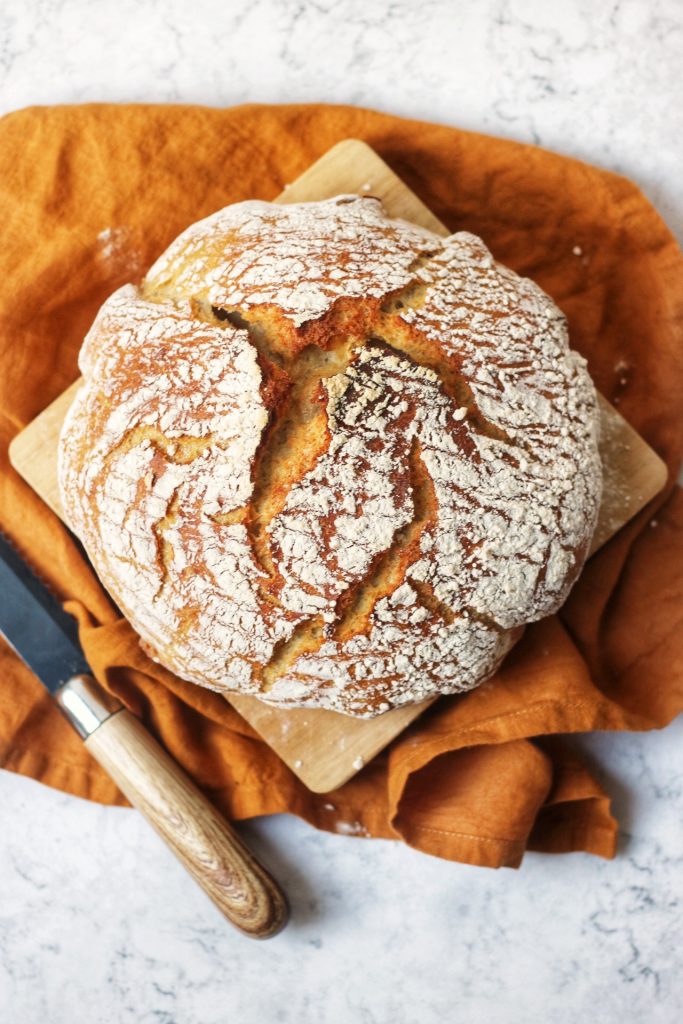
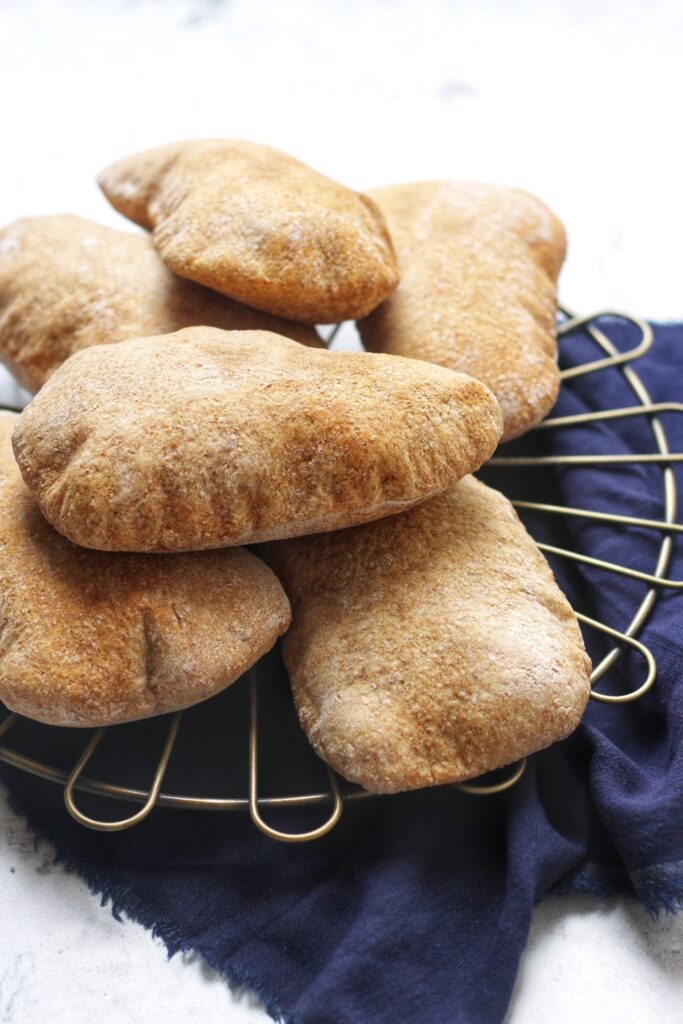
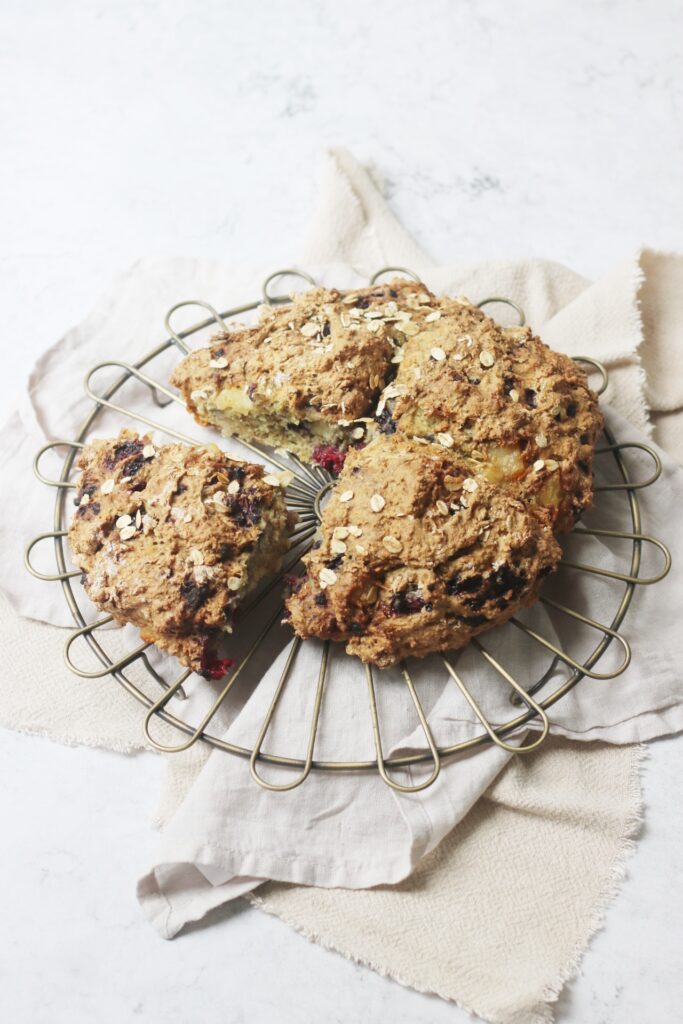

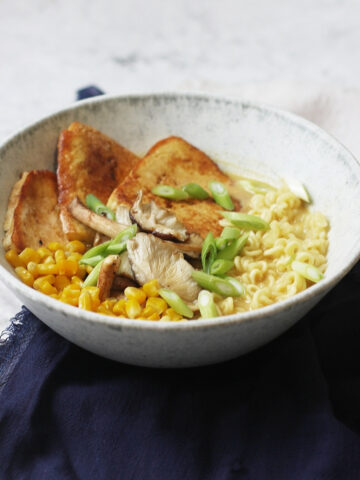
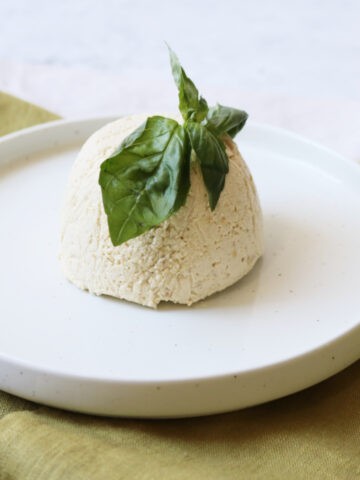
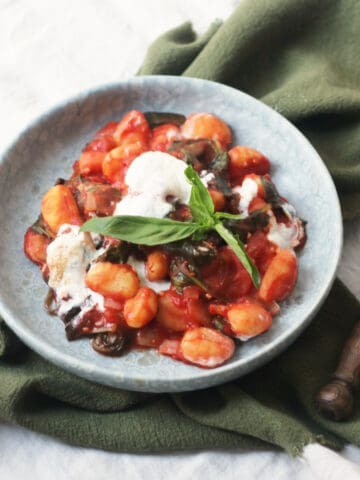
Leave a Reply